
Posts Tagged: Western Apicultural Society
Thank a Farmer, Thank a Beekeeper
You may have missed it, but today (Thursday, Oct. 12) is National Farmers' Day. The day originated back in the 1800s as a way to recognize and thank farmers for all the work they do to feed our nation--and the world. It's also time to thank a beekeeper. When beekeeper Kim Flottum of northeast...
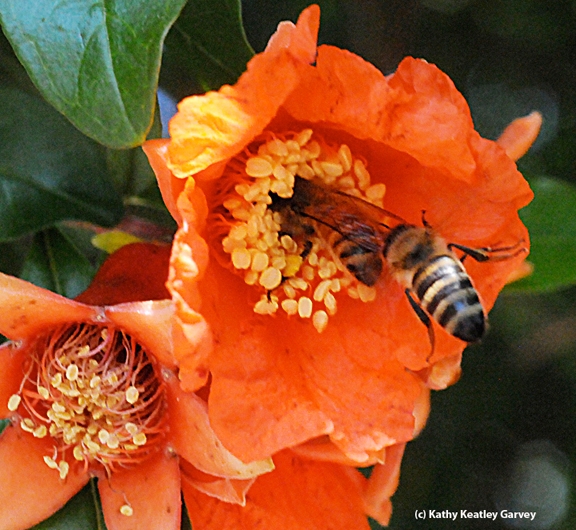
Two honey bees want the same pomegranate blossom. (Photo by Kathy Keatley Garvey)
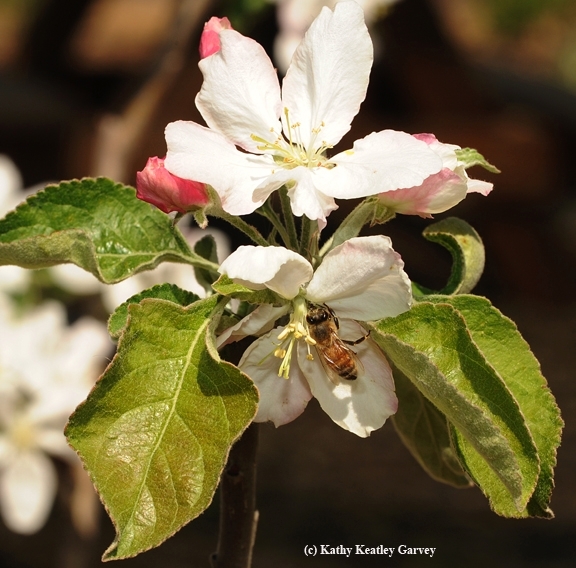
A honey bee pollinating an apple blossom. (Photo by Kathy Keatley Garvey)
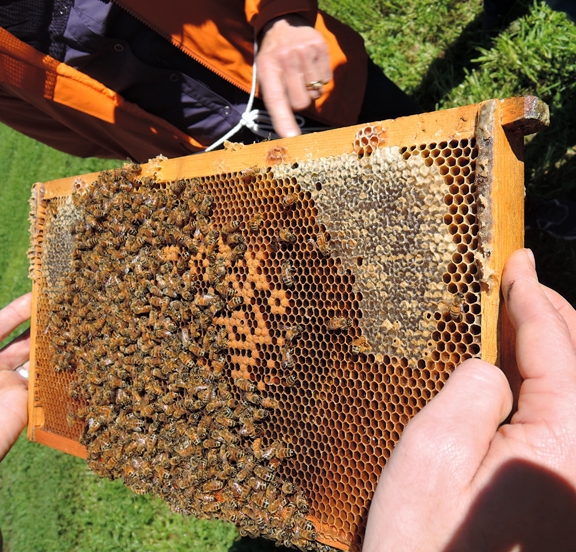
A new beekeeper examines a frame during a UC Davis honey bee course at the Harry H. Laidlaw Jr. Honey Bee Research Facility. Extension apiculturist Elina Lastro Niño and her staff teach classes for the public. (Photo by Kathy Keatley Garvey)
Handing Over the Bees!
Beekeepers circled biologist Randy Oliver, commercial beekeeper, scientist, writer and educator, as he held court in the apiary of the Harry H. Laidlaw Jr. Honey Bee Research Facility, University of California,Davis. It was the third day of the Western Apicultural Society's 40th annual conference,...
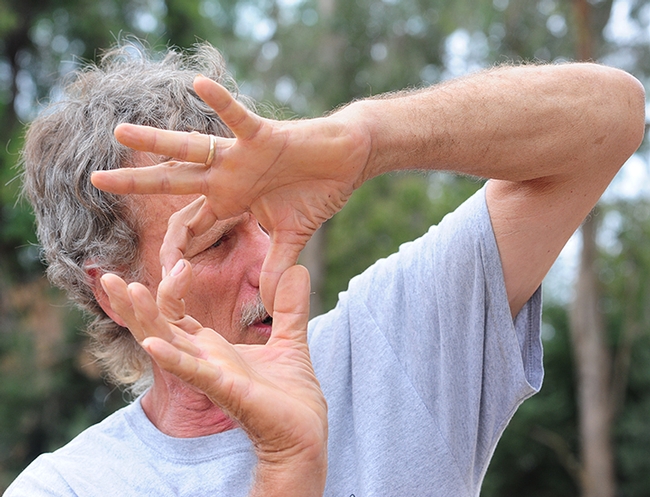
Beekeeper-scientist Randy Oliver of Grass Valley gestures during his presentation. (Photo by Kathy Keatley Garvey)
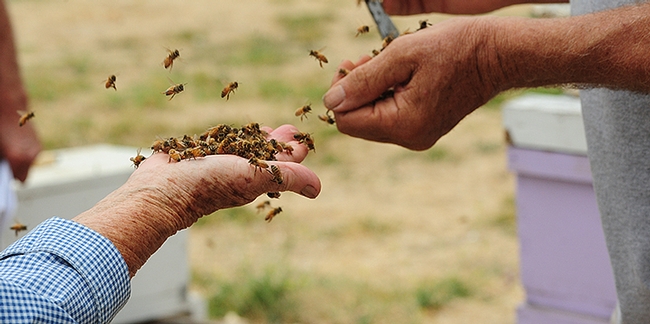
Randy Oliver hands over bees to beekeeper Ettamarie Peterson of Petaluma, a member of the Sonoma County Beekeepers' Association and the Western Apicultural Society. (Photo by Kathy Keatley Garvey)
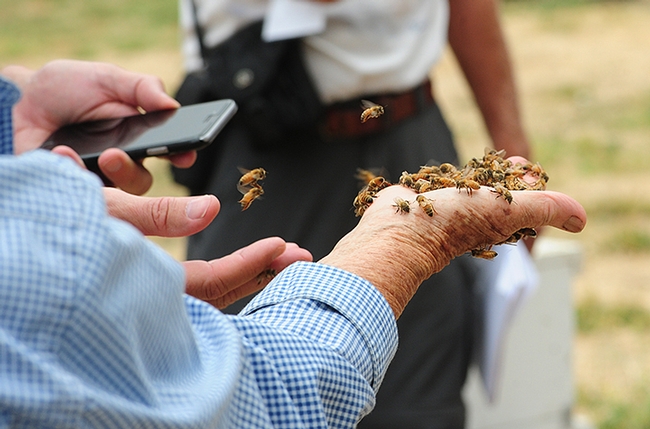
Beekeeper Etta Marie Peterson displays a handful of bees as a cell phone photographer captures the moment. (Photo by Kathy Keatley Garvey)
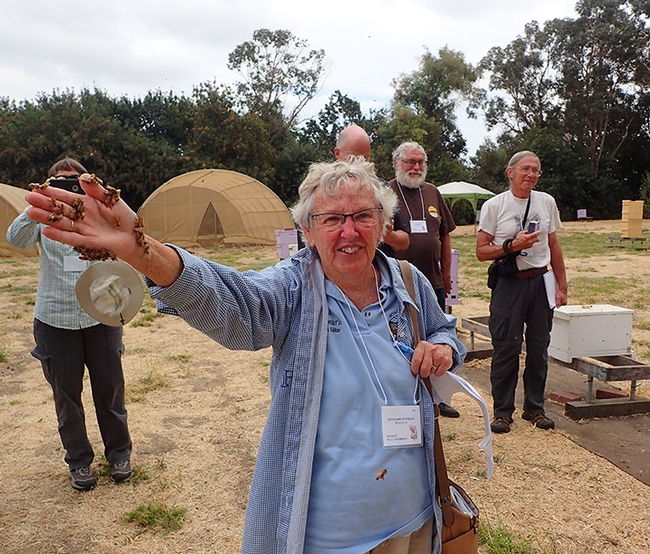
If a bird in the hand is worth two in a bush, what's a handful of bees worth? Ettamarie Peterson, Petaluma beekeeper and member of the Sonoma County Beekeepers' Association and the Western Apicultural Society, displays a handful of nurse bees. (Photo by Kathy Keatley Garvey)
'Bee Man' Norm Gary: Still Smokin'
It's not every beekeeper who can say they've owned--and used--a smoker for 70 years. "Bee Man" Norman Gary can. And he displayed it at the Western Apicultural Society's 40th annual conference, held recently at UC Davis. Gary, who initiated and spearheaded the founding of WAS while a professor of...
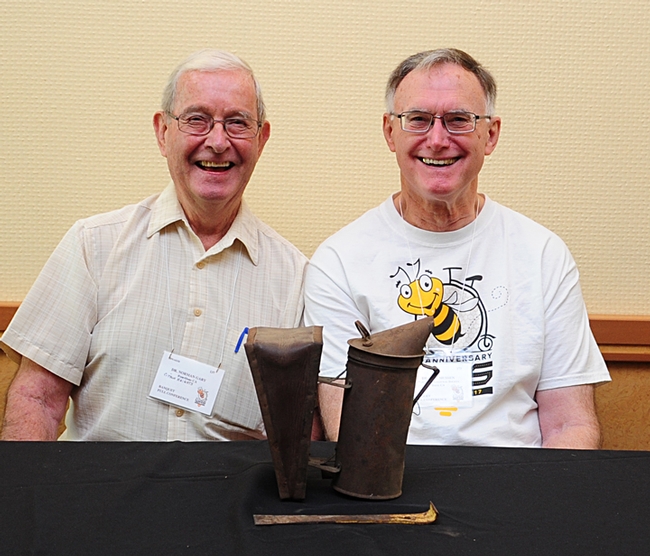
Emeritus professor of apiculture Norm Gary (left) and Eric Mussen, Extension apiculturist emeritus, pose with Gary's 70-year-old smoker. (Photo by Kathy Keatley Garvey)
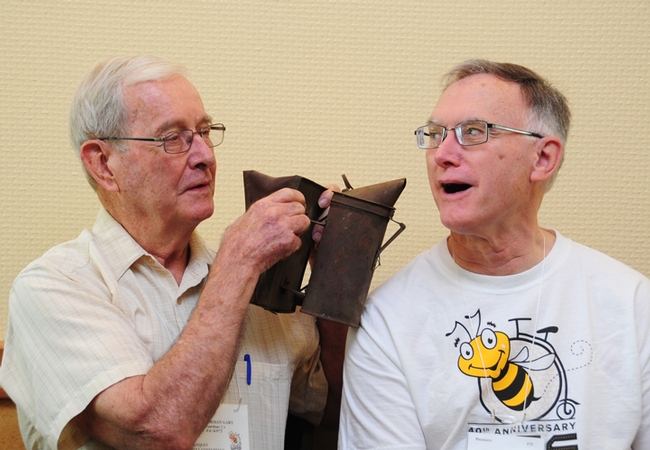
A little fun between friends! Norm Gary (left) playfully aims his smoker at Eric Mussen. Gary retired from UC Davis in 1994 as an apiculture professor, and Mussen in 2014 as an Extension apiculturist. Mussen continues to maintain an office in Briggs Hall, UC Davis. (Photo by Kathy Keatley Garvey)
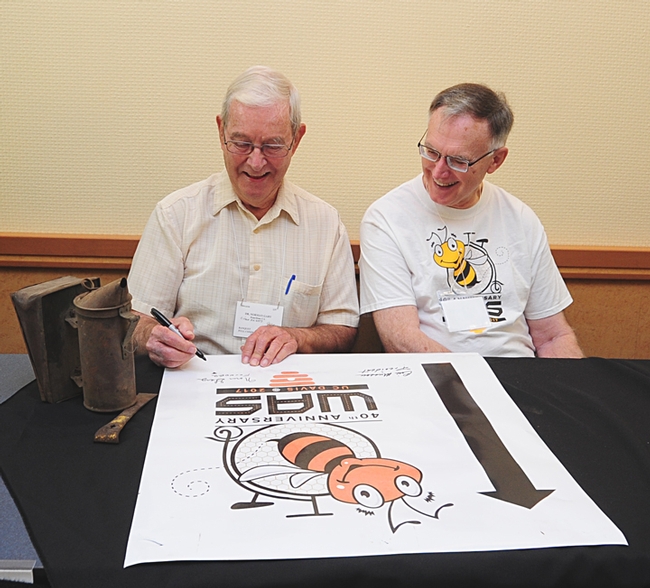
Norm Gary (left) and Eric Mussen sign a Western Apicultural Society poster. Gary initiated and spearheaded the founding of WAS and served as its first president. Mussen just finished his sixth term as president. (Photo by Kathy Keatley Garvey)
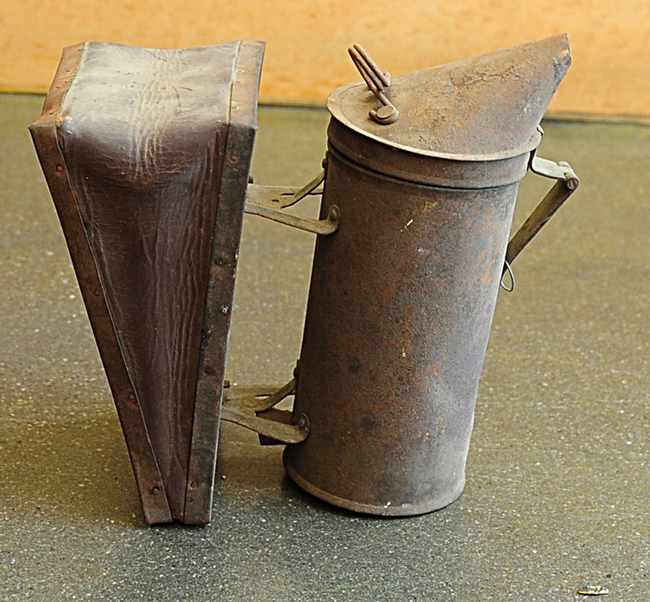
This is Norm Gary's 70-year-old smoker. He acquired this at age 13. (Photo by Kathy Keatley Garvey)
The Sneaky Cuckoo Bee
You could call it a slacker, a deadbeat, a moocher, a sponger, or a loafer. Or you could call it a cuckoo bee. Take the cuckoo bee, Xeromelecta californica, a parasite of the digger bee, Anthophora. When the female Anthophora leaves its nest to collect more pollen, the female cuckoo bee sneaks...
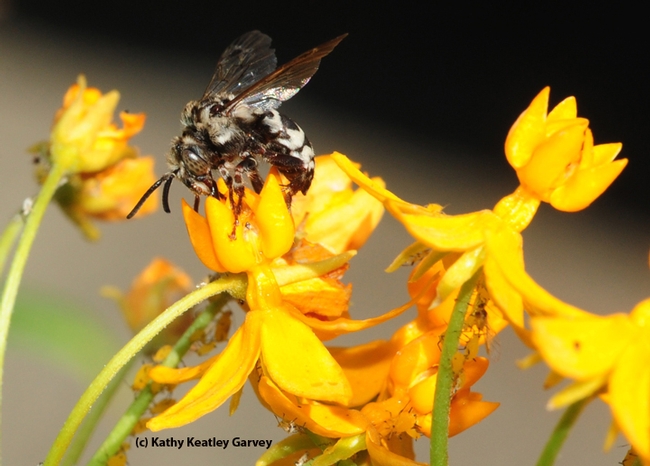
A cuckoo bee, Xeromelecta californica, sips nectar from a tropical milkweed, Asclepias curassavica, in Vacaville, Calif. (Photo by Kathy Keatley Garvey)
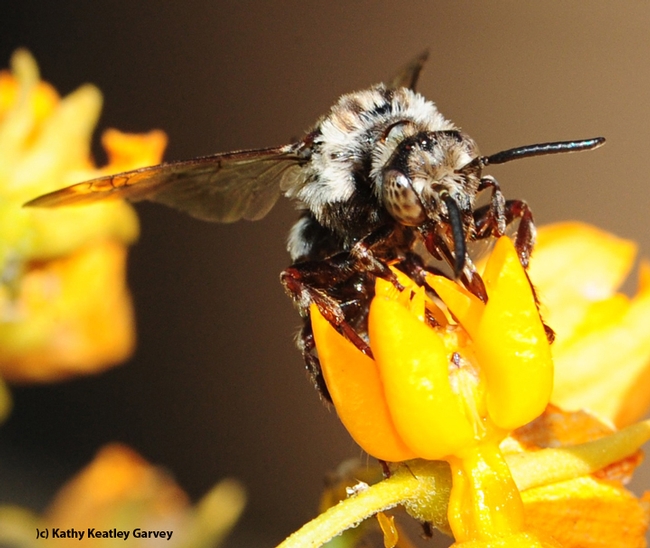
Close-up of a cuckoo bee, Xeromelecta californica, on a tropical milkweed, Asclepias curassavica. (Photo by Kathy Keatley Garvey)
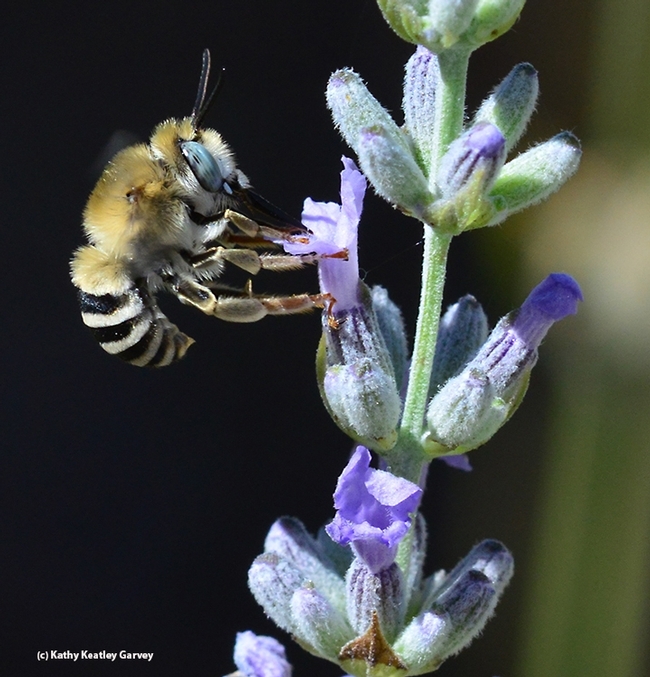
A digger bee, Anthophora urbana, sips nectar from lavender. The cuckoo bee, Xeromelecta californica, is a parasite of Anthophora. It lays eggs in the host's nest, resulting in death of the host's offspring. (Photo by Kathy Keatley Garvey)
For the Love of Bees
Sarah the Bee Girl stands in front of a cluster of first graders sitting by a six-foot worker bee sculpture in the UC Davis Häagen-Dazs Honey Bee Haven. Her name is Sarah Red-Laird, and she is here to present an interactive educational program involving bees and beekeeping, honey,...
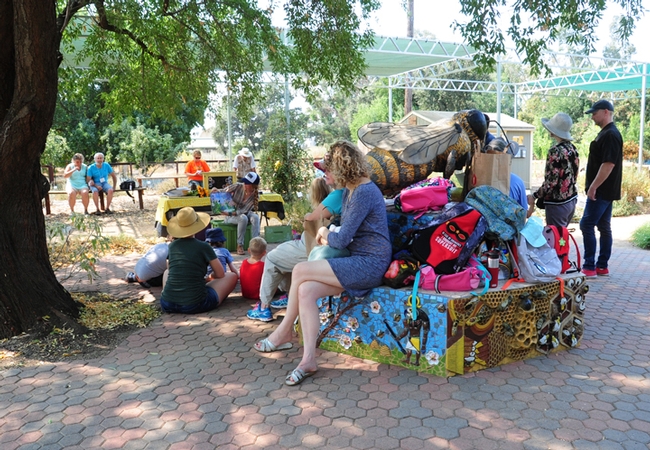
First graders, school officials and parents from Peregrine School cluster around a bee sculpture at UC Davis Häagen-Dazs Honey Bee for a "Kids and Bees" program. (Photo by Kathy Keatley Garvey)
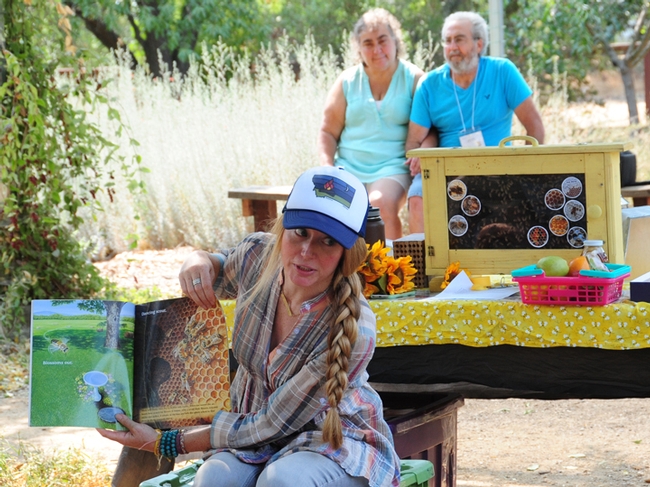
Sarah the Bee Girl reads a book about bees. In back are WAS members Cyndi and Jim Smith of Donney Lake, Wash. Cyndi serves as the secretary. (Photo by Kathy Keatley Garvey)
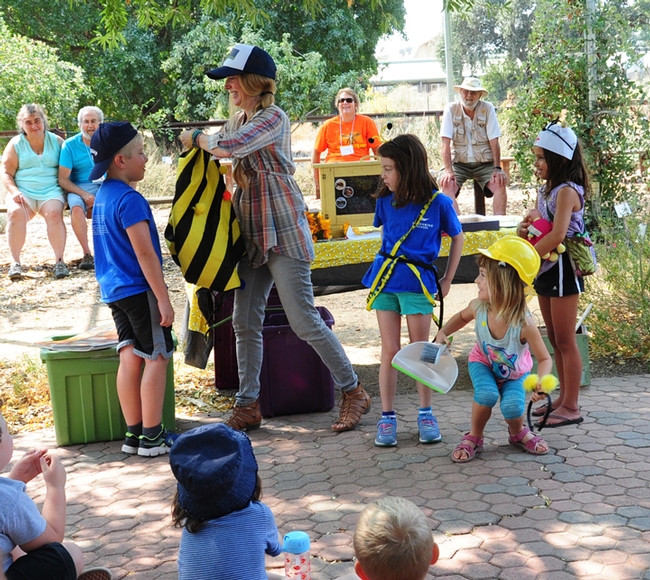
Sarah the Bee Girl outfits a first grader with a forager costume for correctly answering a question about foragers. (Photo by Kathy Keatley Garvey)
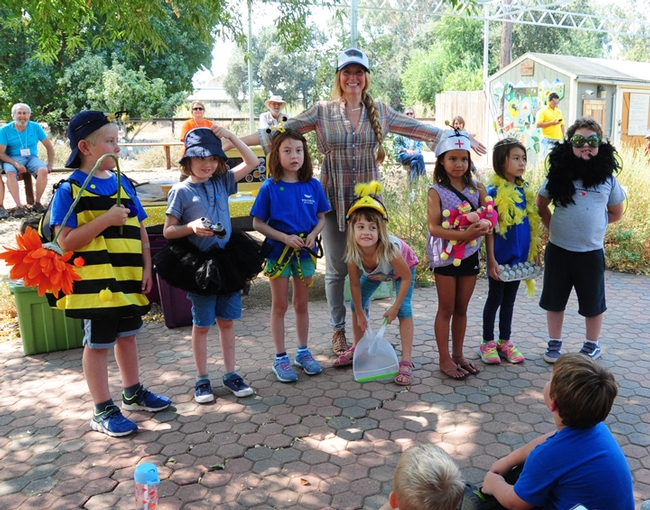
After Sarah the Bee Girl (back) read a book about bees, she quizzed them, and those with the correct answers were given props depicting those bees. These youngsters represent (from left) a forager, a scout bee, a house bee, a nurse bee, the queen bee and a drone. (Photo by Kathy Keatley Garvey)
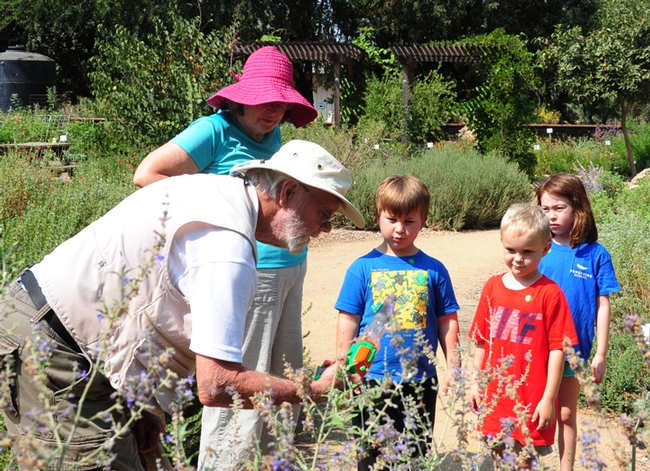
Robbin Thorp (left), distinguished professor of entomology at UC Davis, catches a bee with his device. A magnifying class enables the youngsters to see the bee up close. (Photo by Kathy Keatley Garvey)
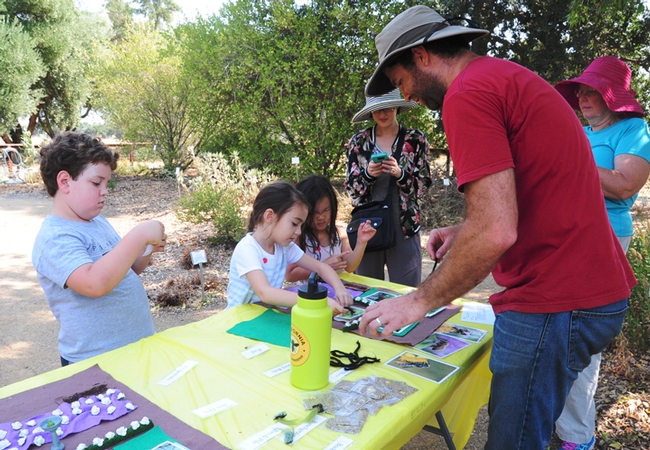
Staff research associate Charley Nye, manager of the Harry H. Laidlaw Jr. Honey Bee Research Facility, staffed the bee habitat table. (Photo by Kathy Keatley Garvey)
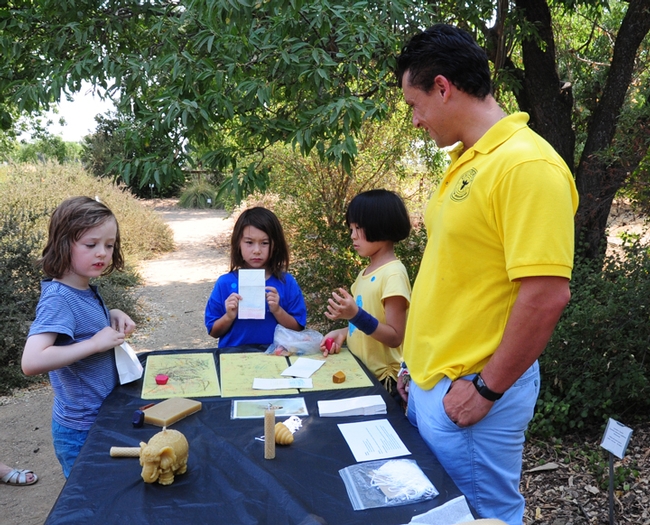
Staff research associate Bernardo Niño of the Harry H. Laidlaw Jr., Honey Bee Research Facility/UC Davis Department of Entomology and Nematology, staffed the beewax table. (Photo by Kathy Keatley Garvey)
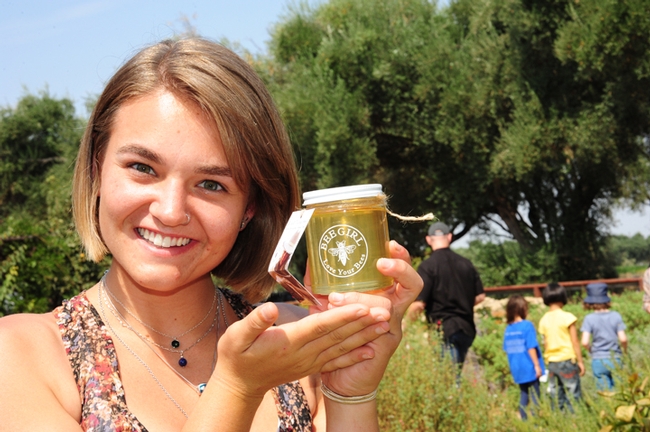
Zoe Anderson, a UC Davis undergraduate student majoring in animal biology, holds up a jar of honey bottled by Sarah the Bee Girl. Her bees foraged on vetch to produce this honey, which was the favorite of all the honeys tasted. Anderson staffed the honey-tasting table with WAS member Kari Hallopeter of Spokane, Wash. (Photo by Kathy Keatley Garvey)
